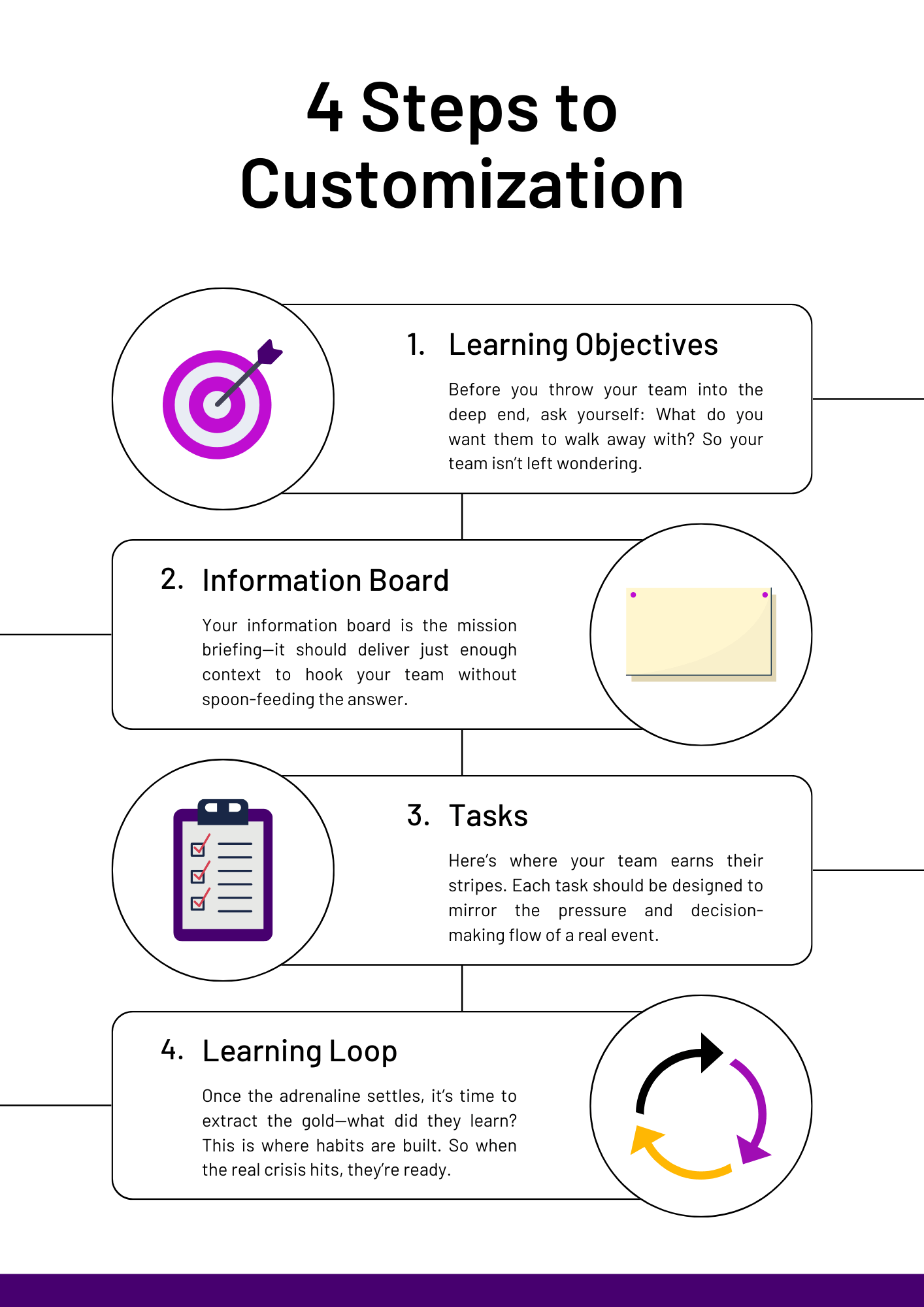In today’s fast-paced, risk-filled world, training can’t just be another box to tick—it needs to stick.
If your team is going to be battle-ready for real-world challenges, your simulations should do more than throw out hypothetical problems. They should drive real decision-making, critical thinking, and, most importantly, muscle memory for response.
So, how do you design a scenario that actually engages your team instead of making them mentally check out? Let’s break it down.
1. Start with the End in Mind: Learning Objectives
Before you throw your team into the deep end, ask yourself: What do you want them to walk away with?
✔️ Are you sharpening their ability to detect an AI-generated phishing attack?
✔️ Stress-testing their decision-making under regulatory scrutiny?
✔️ Running a real-time test of your incident response playbook?
A clear learning objective keeps your scenario laser-focused—so your team isn’t left wondering, Was this about cyber risk or crisis comms? Or both?
2. Set the Stage: The Information Board
Your information board is the mission briefing—it should deliver just enough context to hook your team without spoon-feeding the answer. Think of it as setting up a thriller: The information board, together with the mixed media (such as videos, images, documents, or other artifacts), are what sets the scene for engagement.
✔️ What’s happening? (A major supplier has been hit with ransomware, and the media caught wind before you did.)
✔️ What do they already know? (Your team has a crisis comms plan—but does anyone actually remember what’s in it?)
✔️ What’s at stake? (Customer trust, regulatory fines, and…your sanity.)
Keep it crisp, high-level, and engaging. Nobody wants to read an essay before making decisions under pressure.
3. Action Time: The Tasks
Here’s where your team earns their stripes. Each task should be designed to mirror the pressure and decision-making flow of a real event.
✔️ Decision Points: Should they respond publicly or wait for more intel?
✔️ Collaboration Triggers: Who needs to be in the room for this one—Legal, IT, or the Board?
✔️ Unfolding Complexity: A second wave of issues emerges—are they ready for the curveball?
The best scenarios force participants to think ahead, adapt fast, and own their decisions—just like they would in a real incident.
4. The Aha Moment: Learning Loop Questions
Once the adrenaline settles, it’s time to extract the gold—what did they learn? iluminr’s learning loop questions push teams to reflect, refine, and improve.
✔️ What worked well?
✔️ Where did we hesitate?
✔️ What would we do differently next time?
This is where habits are built. The more teams actively engage with their decisions, the more those responses become second nature—so when the real crisis hits, they’re ready.
Building Real-World Confidence
A well-designed iluminr Microsimulation isn’t just an exercise—it’s a competitive advantage. The teams who train with intent, reflect on their gaps, and build real-world confidence are the ones who outmaneuver risk instead of getting blindsided by it.
So, are you ready to build a scenario that actually moves the needle? Let’s make it happen.















